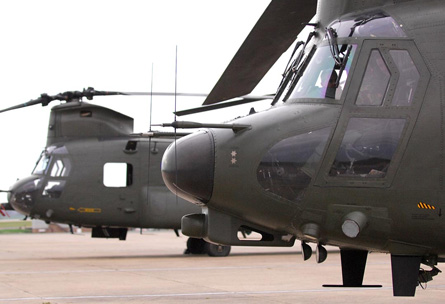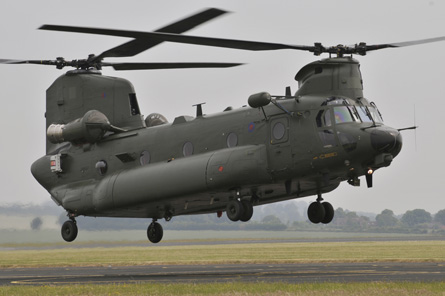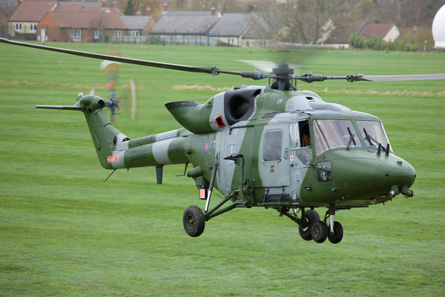The UK armed forces have received the first examples of two modified support helicopter types under initiatives intended to boost their operational effectiveness in Afghanistan.
The Royal Air Force late last year accepted its first of eight Boeing CH-47 Chinook HC3 transport helicopters into service, following the completion of modifications to clear the aircraft - which had been kept in storage since there delivery from 2002 due to software certification issues - for frontline use.
Boeing Defence UK says the first HC3 was delivered on 30 November, and that the new type has subsequently received initial operational capability clearance. All eight aircraft will be accepted by the end of 2010 at RAF Odiham, Hampshire.
 |
|---|
© Boeing |
The Chinook HC3 (right) has at last joined the flightline at RAF Odiham |
A package of so-called "reversion" modifications to bring the HC3's avionics fit to a standard comparable to the RAF's legacy Chinook HC2/2A airframes is being conducted at the Ministry of Defence's Boscombe Down site in Wiltshire. The work also involves AgustaWestland, GE Aviation Systems and Qinetiq.
 |
|---|
© Qinetiq |
"The Mk3s will help strengthen our current fleet support, both at home and abroad," says Gp Capt Steve Shell, the service's Chinook Force Commander.
The UK currently has around eight of its 38 Chinook HC2/2As deployed in Afghanistan to support operations by the NATO-led International Security Assistance Force. It also n December announced its intention to field a further 24 new CH-47s from 2013, including two which will serve as replacements for aircraft lost in combat action in the country in 2009.
Meanwhile, the British Army has taken delivery of its first four of 12 upgraded Lynx AH9A utility helicopters from AgustaWestland.
 |
|---|
© AgustaWestland |
Modifications made under an urgent operational requirement deal signed in December 2008 included replacing the baseline AH9's Rolls-Royce Gem engines with Honeywell/R-R LHTEC CTS800-4Ns. Delivering a 37% increase in power output over the original engines, these will enable the upgraded aircraft to operate effectively under hot and high environmental conditions in Afghanistan from later this year.
First flight of an AH9A took place last September, and deliveries from the first batch were completed in December. Three more will follow by April, with the remainder to be returned to service by September 2012; three months ahead of schedule.
Meanwhile, AgustaWestland and the MoD are discussing a possible follow-on contract to bring the army's other 10 Lynx AH9s to the A-standard by early 2012. The modified type will eventually be replaced by the new-generation Lynx Wildcat, the first development example flew for the first time late last year.
Source: Flight International



















